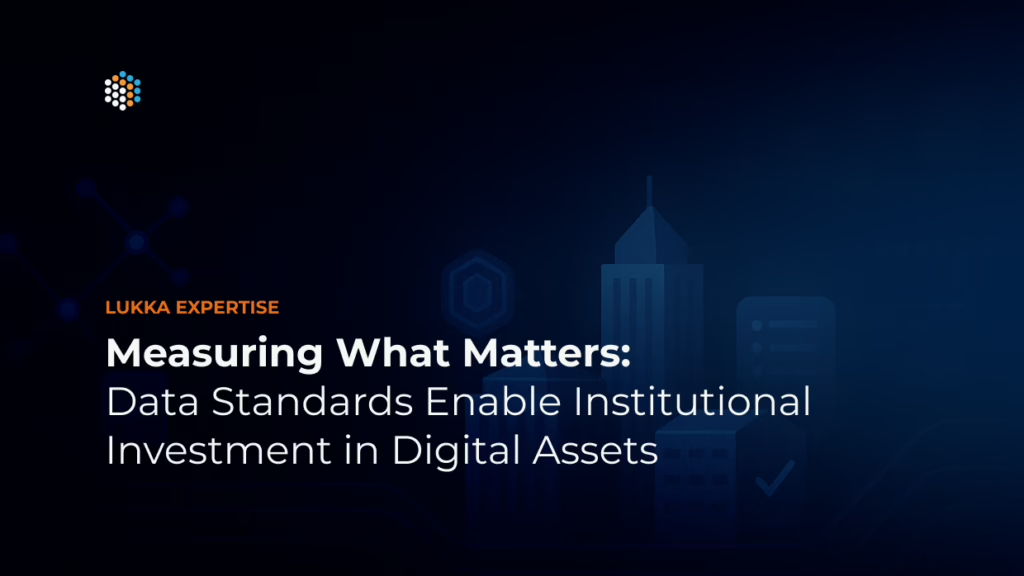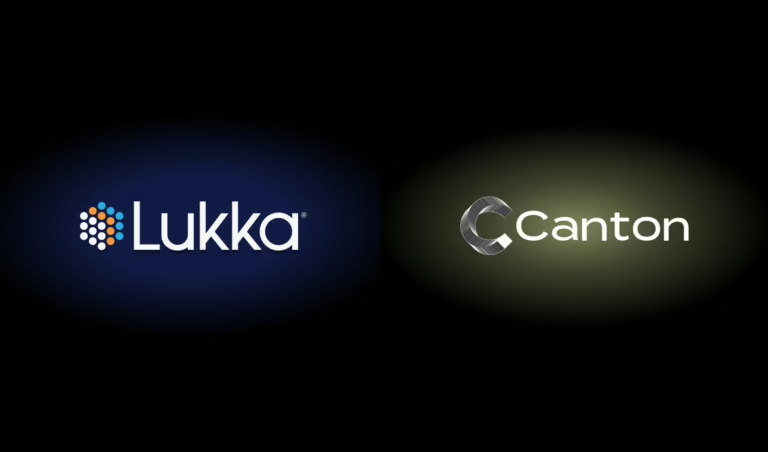The Growing Importance of Data Infrastructure in Financial Markets
As institutional participation in digital assets continues to accelerate, the need for standardized data has never been more critical. According to the EY-Parthenon and Coinbase 2025 Institutional Investor Digital Assets Survey, the market is fundamentally changed, with institutions facing rigorous data requirements, increased regulatory scrutiny, and technology-driven process optimization.
For digital asset projects seeking institutional capital, standardization is essential as digital asset markets generate fragmented, inconsistent on-chain and off-chain data. The fundamental requirement remains clear: making crypto “look and behave like any other asset class on the back-office side.”
Classification Standards Create Common Language
The Lukka Digital Asset Classification Standard (LDACS) provides a taxonomy across digital assets similar to the Global Industry Classification Standard (GICS) used in equity markets. This standardization enables both high-level sector analysis and detailed protocol-specific assessment.
Make crypto look and behave like any other asset class on the back-office side.
S&P Dow Jones Indices has incorporated Lukka Data in its benchmark construction process for crypto indices. Traditional financial institutions utilize these classifications in their digital asset reporting frameworks, demonstrating how standardized taxonomies support institutional product development.
Major asset management firms report they couldn’t launch structured ETF products without having a clear classification system that risk and portfolio construction teams understand. These systems need to map to frameworks they already use for other asset classes.
Classification Standards Create Common Language
Institutional investors are increasingly looking for sophisticated data frameworks and classification standards to support their investment decisions. In today’s market, providing standardized, machine-readable data isn’t just a competitive advantage—it’s essential for institutional consideration.
The role of data standards is especially critical as investors expand beyond Bitcoin and Ethereum. According to the EY-Parthenon and Coinbase 2025 Institutional Investor Digital Assets Survey, 73% of institutional investors now hold cryptocurrencies beyond BTC and ETH, creating an urgent need for consistent data frameworks that enable cross-asset comparison and analysis.
The Convergence of Traditional and Digital Asset Classes
The institutional investment landscape continues to evolve, with significant momentum toward digital asset adoption. For crypto protocols seeking institutional adoption, this represents both an opportunity and a challenge. Protocols that align their data reporting and structure with established institutional standards position themselves to benefit from this convergence, while those that maintain idiosyncratic data practices risk exclusion from significant capital flows.
With the EY-Parthenon and Coinbase survey finding that 57% of institutions cite regulatory clarity as the most important catalyst for industry growth, standardized data frameworks that facilitate compliance and institutional understanding directly impact a protocol’s attractiveness to sophisticated investors.
Tokenization and New Asset Classes
The focus in digital assets is shifting from pure cryptocurrency to the underlying technology of tokenization—the process of issuing digital representations of assets on a blockchain. This presents an opportunity for data providers like Lukka to extend their classification and risk standards into the tokenized asset space, creating consistent frameworks that enable institutions to evaluate these new instruments with the same rigor as traditional assets.
DeFi and Advanced Digital Asset Use Cases
The rise of decentralized finance (DeFi) presents new data standardization challenges and opportunities. As institutions explore DeFi options, comprehensive data infrastructure serves not just as a reporting tool but as a risk management framework that enables broader institutional participation.
Market Access Intelligence Guides Liquidity Strategy
Protocols limiting trading to unregulated venues face challenges attracting institutional capital. Comprehensive venue intelligence covering trading venues, marketplaces, and custodians across spot, derivative, and over-the-counter markets provides crucial market structure information.
This data includes regulatory status, operational reliability, and custody framework details – factors prioritized by institutional compliance departments when approving investment vehicles.
Trading technology providers incorporate venue risk data into their execution systems, allowing institutional traders to make informed decisions about where to route orders based on standardized venue metrics rather than subjective assessments.
Regulatory Clarity and Data Standards: Two Sides of the Same Coin
Institutional investors consistently identify regulatory uncertainty as their primary concern when considering digital asset investments. The EY-Parthenon research reveals that 50% of respondents view crypto custody rules as the most important area requiring regulatory clarity, underscoring the strategic importance of robust data solutions.
By implementing standardized classification systems, risk metrics, and governance assessments, digital asset projects can position themselves advantageously for the regulatory developments that institutional investors identify as crucial catalysts for industry growth.
Data Standards as the Foundation for Institutional Adoption
The evidence is clear: the EY-Parthenon and Coinbase study shows that 85% of institutional investors increased their allocations to digital assets in the past year, making the trajectory unmistakable. For digital asset projects seeking to capture this growing institutional interest, providing standardized, verifiable data is no longer optional—it’s essential. The successful protocols of tomorrow will be those that can speak the language of institutional finance today, through comprehensive data frameworks that facilitate analysis, comparison, risk assessment, and regulatory compliance.
As we move into this new era of institutional digital asset investment, the infrastructure provided by data standardization companies like Lukka will likely become an increasingly critical part of the market ecosystem—enabling the next wave of capital formation in the digital asset space.



